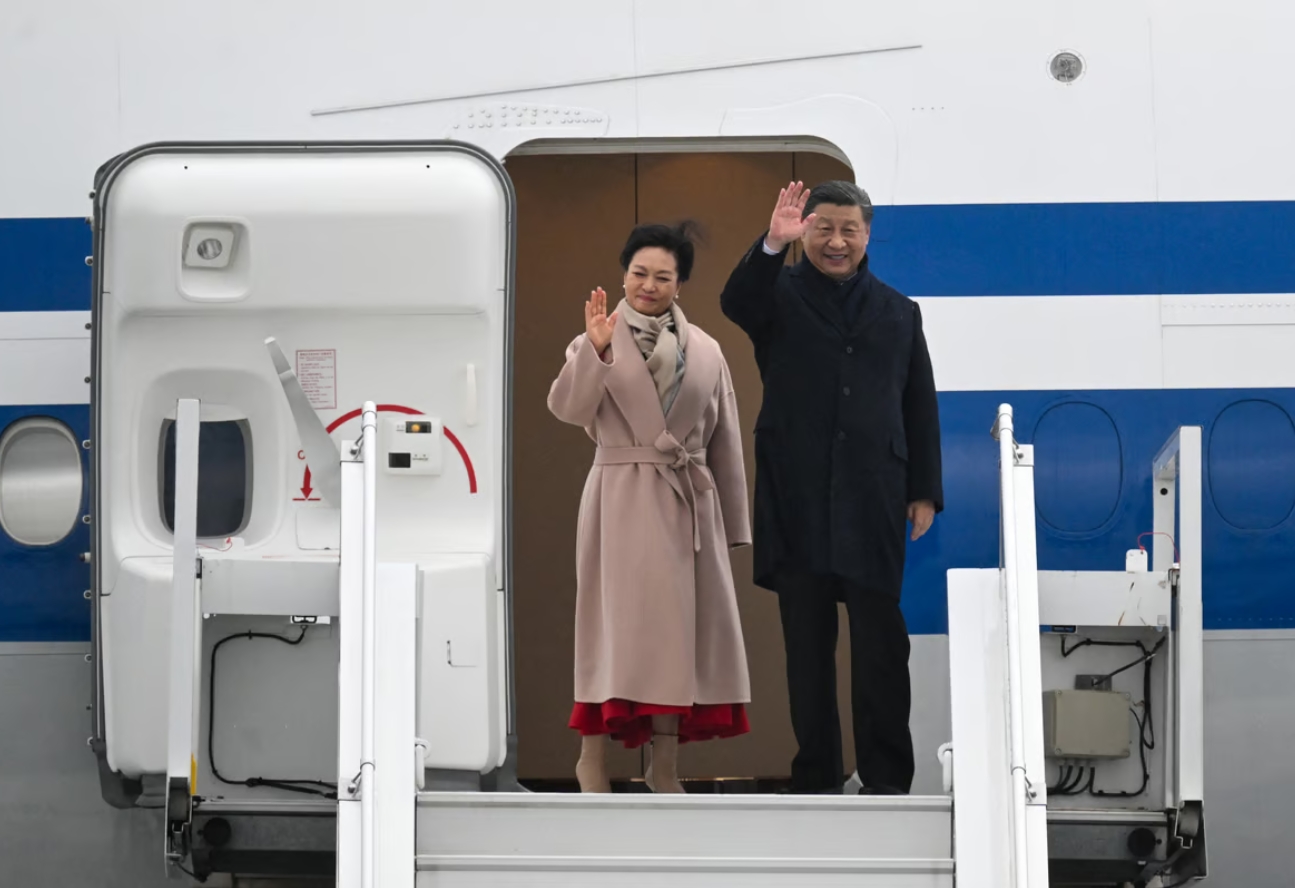The Yin and Yang of traditional Chinese and Western healthcare
The current state of affairs in Western and Chinese healthcare
Frans Vandenbosch 方腾波 15.03.2024

It’s not the medications that make the difference.
This article is not about Western pharmaceuticals versus traditional Chinese medicine. It is about the holistic approach to healthcare. It is about using all senses and all, often very simple, tools to make a correct diagnosis. It is about personalized care for the health of people.
Traditional Chinese Medicine and Healthcare
The success of Western Scientific approaches to healthcare, over the last 150 years, can be measured by substantial increases in life expectancy, reductions in infant mortality and the virtual elimination of many infectious diseases accompanied by development of effective management practices for noncommunicable diseases. Four major NCDs (cardiovascular diseases, cancer, chronic respiratory diseases and diabetes) are responsible for 82% of NCD deaths. NCDs currently cause more deaths than all other causes combined and NCD deaths are projected to increase to 52 million by 2030.
However, major challenges remain in the form of infectious diseases that evolve resistance to pharmaceuticals rapidly, new diseases, particularly those caused by viruses and effective long-term treatments for chronic, noncommunicable diseases. [i]
Traditional Chinese Medicine (TCM) can offer complementary treatments based on personalised interventions, informed by knowledge accumulated from empirical observations gathered over centuries of practice, that address the impact of disease on the whole body.
There are examples of both infectious and noncommunicable diseases where the combination of Western Scientific Medicine (WSM) and TCM can benefit patients in terms of the speed and efficacy of recovery or disease management. TCM is a healing skill based on practice, while WSM is scientific, based on experiments. Against this background, an understanding of the mechanisms of action of traditional Chinese medicinal preparations will offer fresh routes to discovery and development of new therapeutics as well as patented medical prescriptions, which will rely heavily on modern scientific methodologies for their adoption and success, particularly those in plant genomics, plant breeding and synthetic biology.[ii]
Based on a holistic dialectic approach, traditional Chinese medicine (TCM) has incorporated valuable experiences over thousands of years in healthcare, disease prevention and treatment with a complete theoretical system that has spread worldwide.
There is a steady progress in the Chinese medical sector and healthcare. Key health indicators reached the forefront among middle- and high-income countries, according to data from the National Health Commission (NHC). Last year, access to healthcare improved and Traditional Chinese Medicine is growing in popularity.
By 2023, China’s infant mortality rate fell to 4.5 per 1,000, the mortality rate among children under five reached 6.2 per 1,000 and the maternal mortality rate decreased to 15.1 per 100,000, the NHC data showed. These are figures close to high-income countries.
As China continues to reform its medical system, efforts have been made to improve accessibility to healthcare.[iii]
Western pharmaceuticals and healthcare
After the spectacular successes of the Western pharma industry, after the consolidations and rationalizations, the pharma giants have grown into powerful companies capable of putting pressure on politics and the healthcare system.
As a consequence, today, Western healthcare is about having a pill for every disease. General practitioner doctors are the ball in a game of power by the pharmaceutical industry. The training of doctors at Western universities, like many other university disciplines, is declining.
Healthcare in the West has become an industry, far removed from genuine concern for the well-being of the people.
It is no coincidence that today, at this globe, there are more obese people than hungry people.
The decline in the quality of Western healthcare
can be attributed to:
– Financial Pressures: Rising healthcare costs straining resources leading to cuts in staffing, infrastructure, and services. This is impacting the quality of care provided to patients.
– Fragmentation of Care: Fragmented healthcare systems leading to inefficiencies, gaps in care coordination, and errors in treatment. Lack of communication and coordination among healthcare providers resulting in disjointed care and poorer health outcomes.
– Shortages of Healthcare Workers: Shortages of healthcare professionals, particularly in critical areas such as nursing and primary care, leading to increased workloads, burnout, and compromised patient care.
– Overuse and Misuse of Healthcare Services: Overutilization of certain medical interventions, inappropriate prescribing of medications, and unnecessary diagnostic tests can contribute to healthcare waste and may not necessarily improve patient outcomes. This can also strain healthcare resources and compromise quality of care.
– Chronic Disease Epidemic: The increasing prevalence of chronic diseases such as diabetes, heart disease, and obesity presents significant challenges to healthcare systems. Managing chronic conditions requires long-term, coordinated care, and failure to do so can result in poorer health outcomes and decreased quality of life.
– Public Health Emergencies: Events such as pandemics or natural disasters overwhelming healthcare systems, leading to disruptions in care delivery and compromising the quality of healthcare services.
– Regulatory Burden: Excessive regulatory requirements and administrative burdens diverting healthcare resources away from patient care and contribute to provider burnout.
– Lack of Patient-focussed care: Healthcare systems that do not prioritize patient preferences, values, and needs may fail to deliver care that is tailored to individual patients. Lack of patient engagement and involvement in decision-making is impacting treatment adherence and overall health outcomes.
Addressing these challenges requires comprehensive strategies that encompass healthcare financing, delivery system reforms, workforce development, technological innovation, and comprehensive efforts to address social determinants of health.
Chinese people are healthy
Chinese people are clearly more healthy than western people. As for the reasons why, I can only guess:
1. The moral health of the Chinese is undoubtedly better than in the West. Disposable income in China is increasing on average by 5 to 8% per year. The economy is flourishing. Chinese taxes are low and fair. The level of education is higher than in the West. Illiteracy is almost non-existent in China. There is no fear mongering about climate issues, no woke culture, no gender madness, no cultural domination, no political correctness, no illegal immigration, no drug abuse, no terrorism, no political instability, … Suicide and crime rate is a fraction of that in the West, The Chinese media is in tune with the population. The social cohesion, care for the elderly and children is astonishing compared to the West.
2. In China, traditionally there is more attention and care for health, not only for one’s own health, but also for family members.
3. Chinese people are more hygienic than Westerners. The consumption of soap, shampoo and cosmetics is close to twice as much per capita than in the West. Chinese traditionally take a shower before to go to sleep; many people take a shower both in the morning and evening.
4. Chinese people eat healthy, varied and not too fatty. Chinese eat little junk or fast food. There is little obesity among the Chinese.
It is not clear which of these factors are the main contributors of the better health of the Chinese people.
The Chinese government has made healthcare a priority.
The significant improvement in healthcare in China has several causes, especially the comprehensive approach and the significant investments by the Chinese government in this area have raised healthcare to a higher level. The main contributors to a better healthcare include:
– Government Investments: The Chinese government has allocated substantial funds towards healthcare infrastructure, equipment, and personnel training. Increased investment has allowed for the construction of new hospitals, upgrading of existing facilities, and expansion of medical services in rural and underserved areas.
– Healthcare Professional Training: China has invested in training healthcare professionals to meet the growing demand for quality care. This includes efforts to improve medical education, expand residency training programs, and enhance the skills of healthcare workers at all levels.
– Technological Advancements: China has embraced medical technology and innovation to improve healthcare quality. This includes the adoption of electronic health records, telemedicine, and advanced medical devices for diagnosis and treatment. Technological advancements have enabled more efficient and accurate healthcare delivery.
– Focus on Preventive Care: There has been a shift towards emphasizing preventive care and public health initiatives in China. Efforts to promote healthy lifestyles, disease prevention, and early detection have contributed to improved health outcomes and reduced healthcare costs in the long term.
– Increased Public Awareness: Greater public awareness of health issues and patient rights has contributed to improvements in healthcare quality in China. Patients are becoming more informed and empowered to seek high-quality care, which incentivizes healthcare providers to uphold standards of excellence.
– Healthcare Reforms: China has implemented extensive healthcare reforms aimed at enhancing access to care, improving quality, and controlling costs. Key initiatives include the establishment of a basic healthcare system, the expansion of health insurance coverage, and the implementation of policies to strengthen primary care and preventive services.
– Quality standards: China has implemented regulatory reforms to strengthen oversight of the healthcare sector and ensure compliance with quality and safety standards. This includes measures to regulate medical facilities, license healthcare professionals, and enforce ethical standards in clinical practice. China has implemented various quality improvement programs aimed at enhancing patient safety, reducing medical errors, and standardizing clinical practices. These initiatives involve establishing clinical guidelines, monitoring healthcare outcomes, and promoting evidence-based medicine
– Efforts to Address Health Inequities: China has made efforts to address disparities in access to healthcare services among different regions and population groups. Initiatives to improve healthcare infrastructure in rural areas, expand health insurance coverage, and provide targeted interventions for vulnerable populations have helped to reduce health inequities and improve overall healthcare quality.
– Collaboration: China has collaborated with international organizations, academic institutions, and healthcare providers to exchange knowledge, expertise, and best practices in healthcare delivery. International collaboration has facilitated transfer of know-how, capacity building, and innovation in the Chinese healthcare system.
I have experienced both sides.
The knowledge and dedication of Chinese doctors is impressive. And yes, I have more than a little experience with that. I have seen at least a dozen doctors in China and been to three major university hospitals. Compared to Chinese hospitals, our large western university clinics are mediocre sheds full of bunglers. Chinese doctors not only use their stethoscope and other instruments; they feel and touch your body in a certain way.
In China they recognize diseases much faster than the inept doctors here in our country. It happened to me that a Chinese doctor told me: “you have gallbladder stones” or “you once had surgery on your heart”, without using an MRI scanner or other complicated equipment. Chinese doctors also seamlessly combine Western medicine with TCM traditional Chinese medicine and perfectly know the limits of the two.
To complement each other, it is most important to present the diagnosis process of TCM with the characteristics of experience and individuation in a standardized way, by collecting and analysing big data collected under the rules of TCM with modern artificial intelligence. Thus with different emphases, the two kinds of medicine will achieve the purpose of jointly maintaining health and life. [iiii]
Conclusion
In summary, I must conclude that Chinese healthcare today is at a higher level than Western healthcare. If I get sick and have to go to a doctor or hospital, I would rather go to China than to Western Europe. Moreover: Chinese healthcare is continuously improving while Western European healthcare is slowly eroding.
[i] World Health Organisation: Global status report on noncommunicable diseases 2014. https://www.who.int/publications/i/item/9789241564854
[ii] Fu Rao, Li Jie, Yu Huatao: The Yin and Yang of traditional Chinese and Western medicine. Medical Research Reviews WILEY 03.02.2021 https://onlinelibrary.wiley.com/doi/full/10.1002/med.21793
[iii] Jan Jonckheere at Chinasquare: Medische sector en gezondheidszorg in 2023: gestage vooruitgang; 02.03.2024. https://www.chinasquare.be/medische-sector-en-gezondheidszorg-in-2023-gestage-vooruitgang/
[iiii] Li Candong: How Western and Chinese medicine can work together; 25.10.2019 https://www.chinadaily.com.cn/a/201910/25/WS5db2ef1ea310cf3e35573b4f.html






I love and admire China. As a retired general practitioner I wholeheartedly agree that big pharma has become a negative influence on population health.